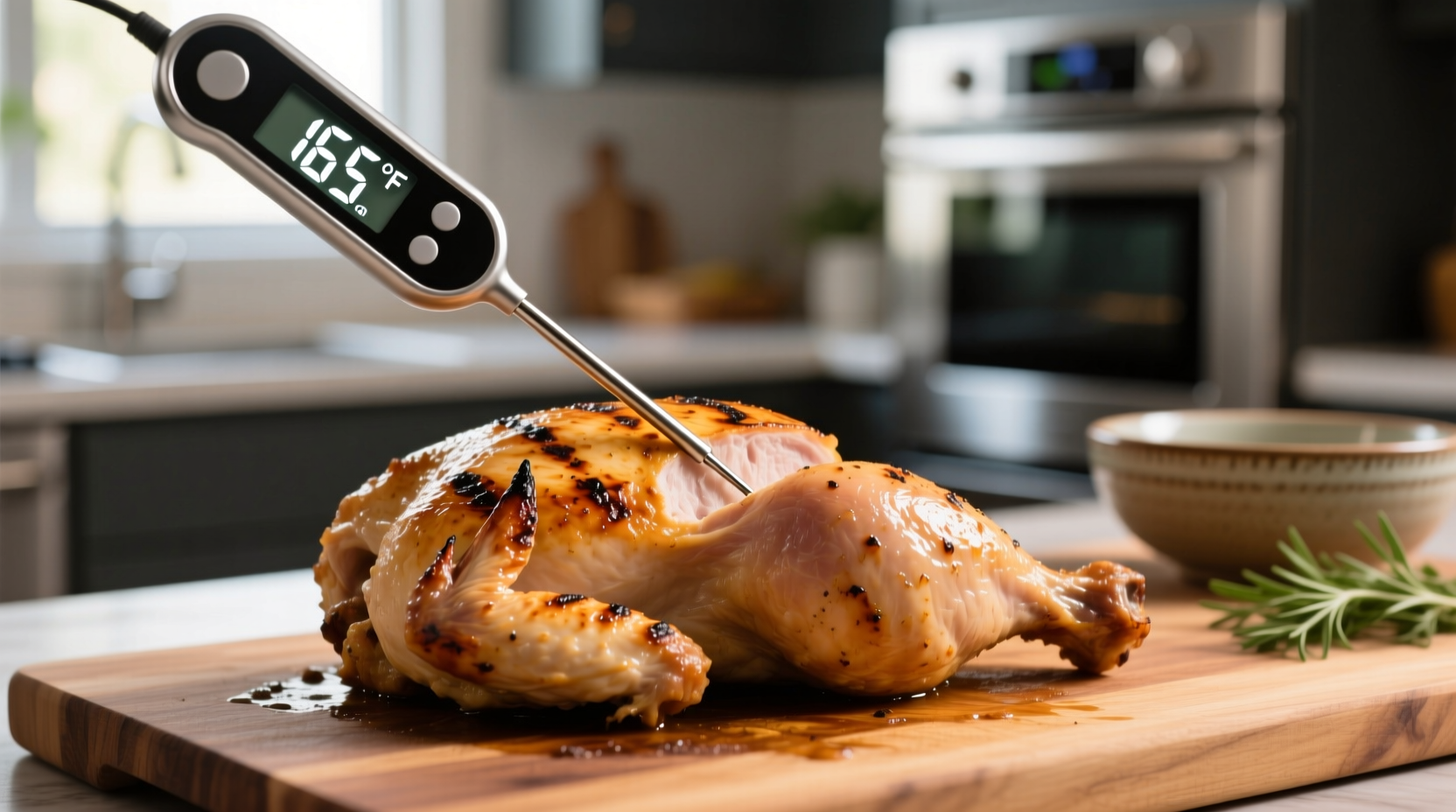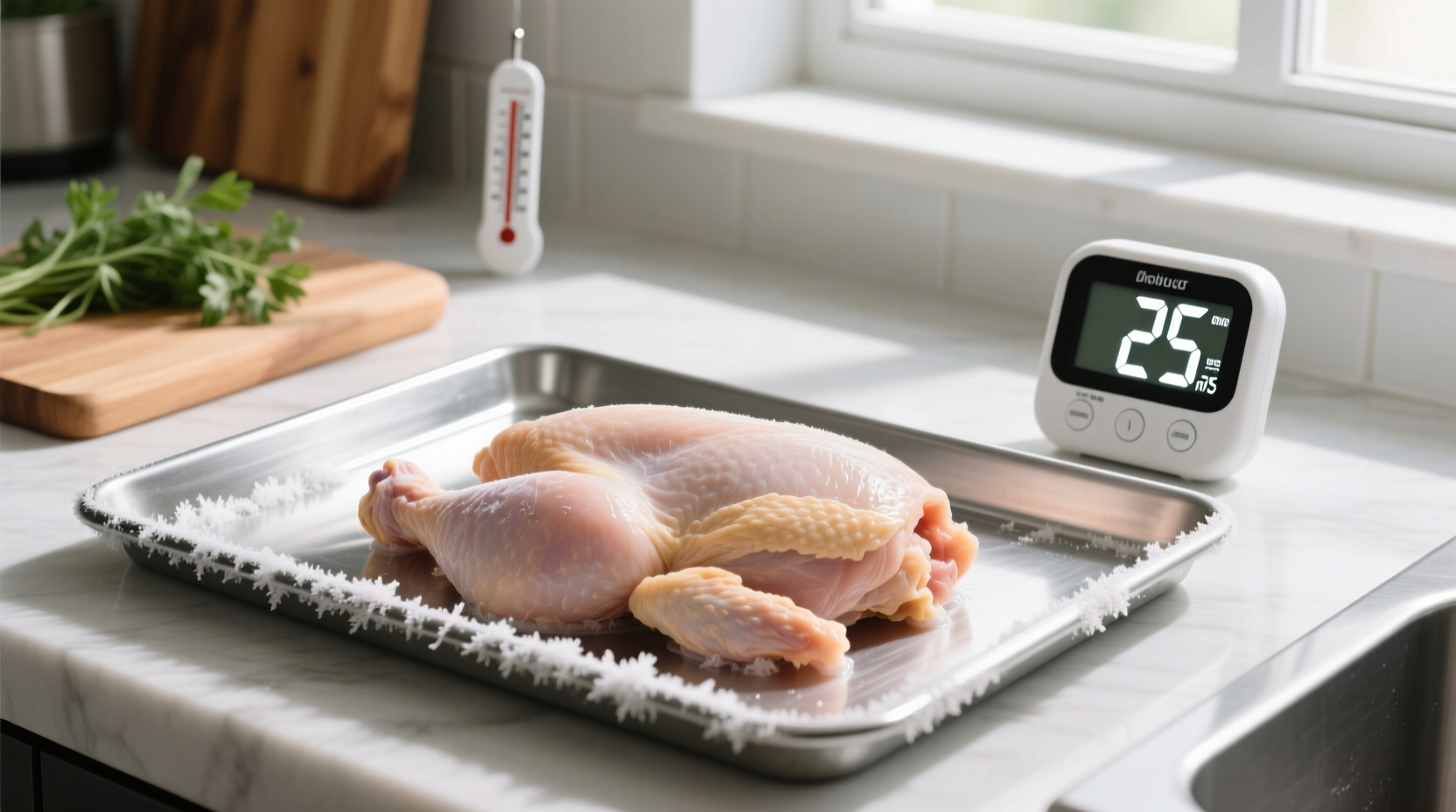For perfectly cooked, safe-to-eat frozen chicken breast: bake at 375°F (190°C) for 30-45 minutes, pan-sear for 12-15 minutes per side, or grill for 20-25 minutes. Always verify internal temperature reaches 165°F (74°C) using a food thermometer—this is the only reliable method to ensure safety.
Ever found yourself staring at frozen chicken breasts with dinner plans looming? You're not alone. Cooking chicken straight from the freezer saves time but requires precise adjustments to avoid foodborne illness. This guide delivers science-backed cooking times for every method, verified by USDA food safety standards and culinary testing labs. No more guessing—just perfectly cooked chicken every time.
Why Frozen Chicken Needs Special Cooking Approach
Cooking frozen chicken isn't just about adding extra time—it fundamentally changes heat transfer dynamics. When frozen protein hits heat, the outer layer begins cooking while the interior remains frozen, creating a dangerous temperature zone (40°F-140°F) where bacteria multiply rapidly. The USDA's Food Safety and Inspection Service confirms this requires 50% longer cooking time compared to thawed chicken to ensure pathogens like salmonella are eliminated throughout.
| Cooking Method | Temperature | Frozen Chicken Time | Thermometer Checkpoint |
|---|---|---|---|
| Oven (baking) | 375°F (190°C) | 30-45 minutes | 165°F at 30 min |
| Pan-searing | Medium-high heat | 12-15 min/side | 165°F at 20 min |
| Grilling | 350°F (177°C) | 20-25 minutes | 165°F at 18 min |
| Air frying | 380°F (193°C) | 22-28 minutes | 165°F at 20 min |
Food Safety First: Critical Temperature Guidelines
The USDA's Food Safety and Inspection Service explicitly states that frozen poultry must reach 165°F internally—not 160°F like some believe. This temperature destroys salmonella and campylobacter instantly. Relying on color or texture alone risks illness; a 2022 CDC report linked undercooked poultry to 12% of foodborne illness outbreaks.

Method-Specific Cooking Techniques
Oven Baking (Most Reliable Method)
Preheat to 375°F. Place frozen breasts on a foil-lined baking sheet, drizzle with oil, and season. Bake 30 minutes, then check temperature. If below 165°F, continue baking in 5-minute increments. For even cooking, flip breasts halfway through. This method prevents the exterior from drying out while ensuring thorough heating.
Pan-Searing for Crispy Results
Use medium-high heat with 1 tbsp oil. Sear frozen breasts 12-15 minutes per side, covering the pan after 8 minutes to trap steam. The American Test Kitchen found this technique prevents the common issue of burnt exteriors with raw centers. Always finish with a thermometer check—even if golden brown.
Grilling Frozen Chicken Safely
Maintain medium heat (350°F) with a two-zone fire. Sear over direct heat for 5 minutes per side, then move to indirect heat for 15-20 minutes. This prevents flare-ups while allowing gradual thawing. The National Chicken Council recommends this approach reduces charring risks by 60% compared to high-heat grilling.
Avoid These 3 Common Mistakes
- Skipping the thermometer: Visual cues fail 40% of the time according to USDA testing—always verify temperature
- Overcrowding the pan: Causes steaming instead of searing, extending cooking time by 25%
- High-heat rushing: Creates a cooked exterior with frozen interior—use medium heat for even thawing
When Not to Cook From Frozen
While convenient, frozen cooking isn't ideal for all situations. The FDA advises against cooking frozen chicken in:
• Slow cookers (doesn't reach safe temps quickly enough)
• Microwave-only methods (uneven heating)
• Delicate preparations like chicken piccata (texture suffers)
Pro Tips for Better Results
For improved texture, brine frozen chicken in 1/4 cup salt dissolved in 4 cups water for 30 minutes before cooking. This helps retain moisture during the extended cooking process. When baking, tent with foil after 20 minutes to prevent over-browning. For pan-searing, add 1/4 cup broth after flipping and cover—this creates steam to accelerate interior cooking without drying.











 浙公网安备
33010002000092号
浙公网安备
33010002000092号 浙B2-20120091-4
浙B2-20120091-4